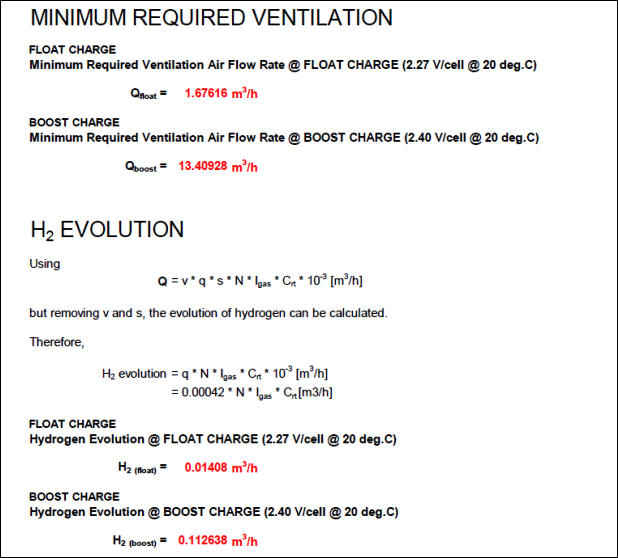Ventilation Rate For Battery Room
Battery rooms or stationary storage battery systems ssbs have code requirements such as fire rated enclosure operation and maintenance safety requirements and ventilation to prevent hydrogen gas concentrations from reaching 4 of the lower explosive level lel.
Ventilation rate for battery room. Table 1 indicates the gassing rate to be expected from each of the vrla batteries at the charging voltages of 2 3 volts per cell float voltage and 2 4 volts per cell equalization voltage. The battery case is constructed of insulating acid resistant material. Designing ventilation for battery rooms. Legislation advises the number of air changes per hour for example is 1332 battery rooms advises 12 air changes per hour or suggest that hydrogen concentration levels are kept below 1 to avoid the.
Air change rate calculate air change rates equations in imperial and si units. Battery the lower will be the gassing rate of the battery. Hydrogen gas ventilation calculator for motive power battery rooms click here to go back the our sbs h2 hydrogen gas detector page. For flooded lead acid flooded ni cd and vrla batteries the ventilation system shall be designed to limit the maximum concentration of hydrogen to 1 of the total volume of the room.
Code and regulations require that lel concentration of hydrogen h2 be limited to 25 of lel or 1 of room volume. Xx after 1 hour. Battery room ventilation codes and standards protect workers by limiting the accumulation of hydrogen in the battery room. Usually plastic or hard rubber.
And has a number of compartments or cells. Ventilation systems for ventilation and air handling air change rates ducts and pressure drops charts and diagrams and more. If the level in your battery room exceeds 1 after one hour of charging normally forced ventilation would be recommended. Note that the.
Jose osmin pineda p e. This can be estimated by comparing the volume of the room to the amount of hydrogen that could potentially be produced within an hour. Based on the numbers provided your room would be at. Hydrogen release is a normal part of the charging process but trouble arises when the flammable gas becomes concentrated enough to create an explosion risk which is why safety standards are vitally important.
There is no shortage of codes and guidance to consider when engineering for this environment but with a truly explosive worst case scenario it s worth every effort to ensure safe hydrogen management. Lead acid motive power batteries produce hydrogen gas at 80 recharge point making proper ventilation in the battery charging area extremely important. Infiltration heat loss from buildings estimated infiltration heat loss. Recesses in the bottom of the cells collect the sediment that falls from the plates.
The likelihood of an explosion occurring depends on the number of batteries the charge rate the size of the room and the ventilation available. A 12volt battery has 6 cells.


















